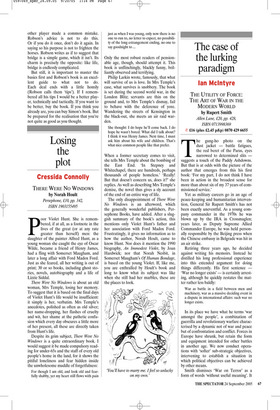Tips for technique and tactics
Sandy Balfour
BRIDGE: COMMON MISTAKES AND HOW TO AVOID THEM by Andrew Robson Times Books, £9.99, pp. 205, ISBN 0007204108 ✆ £7.99 (plus £2.45 p&p) 0870 429 6655 In 1994 the membership of the American Contract Bridge League voted S. J. Simon’s 1946 classic, Why You Lose at Bridge, the best bridge book ever. To that extent, all bridge books live in its considerable shadow. According to Simon you lose at bridge for two reasons: lack of skill and losing tactics. He doesn’t plan to do much about the first. ‘You’ve been making the same mistakes for years and you have every intention of going on making them.’ But he thinks he can, perhaps, help with the second. You lose, he says, not because you can’t play difficult hands (of which there are in any case relatively few) but because you make a mess of the many simple ones that come your way. And so Simon’s aim is not to increase your technical skill, but to help you make the most of what (little) you already have.
Andrew Robson is an altogether nicer person. He believes he can do both. I met him once and, by way of conversation, suggested I would like to be a world-class player within a year. I mean, I’m a reasonably intelligent person, and how hard can it be? Robson paused for a moment (he is well known in tournament bridge for the length and intensity of his ‘trancing’) and then suggested that perhaps it would take me three.
Which was both endearing and highly optimistic. Neither he nor I had any reason to believe a lifetime would make me a world class player, or even a moderately good player. But readers familiar with the missionary zeal with which Robson approaches his daily columns in the Times will know that he believes that things can only get better. Perhaps it is a generational thing.
The question is, does it work? Robson’s book is a collection of 172 deals from his Friday columns: ‘Common Mistakes for the Less Experienced’. Each deal has two narratives — what happened (‘the horror, the horror’) and what should have happened (if only!). In each case what should have happened didn’t because one or other player made a common mistake. Robson’s advice is not to do this. Or if you do it once, don’t do it again. In saying so his purpose is not to frighten the horses. Robson writes as if to suggest that bridge is a simple game, which it isn’t. Its charm is precisely the opposite: like life, bridge is endlessly complicated.
But still, it is important to master the basics first and Robson’s book is an excellent guide to what not to do. Each deal ends with a little homily (Robson calls them ‘tips’). If I remembered all his tips I would be a better player, technically and tactically. If you want to be better, buy the book. If you think you already are, you can buy Simon’s book. But be prepared for the realisation that you’re not quite as good as you thought.

































































 Previous page
Previous page